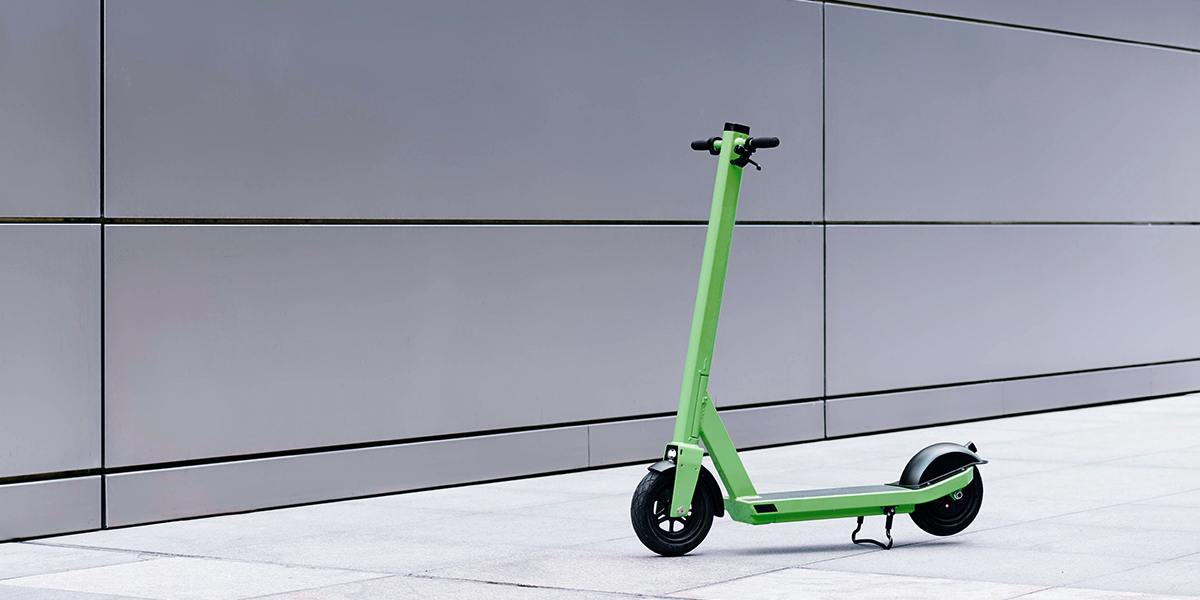Light Electric Vehicles
Light Electric Vehicles (including electric scooters, bicycles, e-motor-scooters and cargo bikes) have experienced enormous market growth in recent years. Depending on the type of vehicle substituted, they can have significant positive sustainability impacts. Batteries are essential in this field. Ideally, they combine high energy density with excellent safety characteristics.
Relevance of this field of application
The field of Light Electric Vehicles (LEVs) comprises a variety of vehicle types. The most widespread are currently (1) electric scooters, (2) electric bicycles (e-bikes), (3) electric scooters (e-motor-scooters) and - especially in Asia - (4) electric cargo bikes (e-rickshaws).
LEVs have a number of advantages over the vehicles they substitute: If bicycles or other vehicles powered only by muscle power are substituted, the significant gain in range is worth mentioning. When substituting vehicles with combustion engines, the focus is on the positive environmental impacts, especially the reduction of urban air pollution. In addition, LEVs can result in lower infrastructure costs as well as positive health effects through physical activity.
References
Use of battery storage
Since it is not practical to supply electricity while riding, LEVs rely on carrying stored electrical energy in batteries. Typical capacities of battery storage used are 200 Wh (pedal scooters), 500-750 Wh (bicycles) or 1.5-3 kWh (scooters and cargo bikes ).
Battery storage systems are often designed as interchangeable systems: After use, a battery can be exchanged for a fully charged one and then recharged while the vehicle remains in operation. In addition, interchangeable systems can act as an anti-theft device: In this case, the LEV is only ready to drive with a personalised battery storage unit.
Nevertheless, permanently installed battery storage units are also available, especially for electric racing bikes and electric scooters, but sometimes also for other types of LEVs. However, they have the disadvantage that the entire vehicle has to be disposed of at the end of the battery's life. As this results in large amounts of avoidable electrical waste, fixed batteries have come under increasing criticism.1
Performance requirements
LEVs place high demands on the size and weight of the batteries used. Especially in the case of single- and two-wheelers, they must be space-saving and design-friendly and should contribute as little as possible to the weight of the vehicle. In principle, this can be achieved by three battery characteristics: (1) a high energy density, (2) little to no capacity decrease over time, and (3) deep dischargeability. For sharing models of LEVs, the issue of capacity decrease gains additional relevance, as the usage rate of the vehicles is usually significantly increased.
In addition, the safety of the batteries is of crucial importance: users of LEVs must be certain that their vehicle is neither a fire nor an explosion hazard - both on the road and at the parking and charging site at home. Special attention must be paid to the fact that batteries in LEVs are often exposed to strong solar radiation and heat up accordingly, which can significantly reduce their service life.
1 Bundesrat (2019): Entschließung des Bundesrates - "Verbot des Einbaus nicht wechselbarer Batterien bzw. Akkumulatoren in Elektro-Scooter, Elektro-Roller, E-Bikes und Pedelecs".
Link ↗ (accessed 12.01.2021)
Market outlook
The market for LEVs is developing rapidly. In 2019, 1.4 million electric bicycles were sold in Germany alone,2 with domestic production amounting to 960,000 units.3 In the EU, sales were 3.7 million units; by 2030, they are expected to have grown to 17 million units annually, according to a recent market study.4 The largest market for e-bikes, however, is the Asian market: in China alone, around 30 million vehicles are expected to be sold annually.5
An important trend here is bike sharing: in Beijing, 2.3 million electric bicycles are in sharing services, in Shanghai 1.7 million.6 In Germany, too, more and more sharing providers are establishing themselves, both for public use in cities and in companies - for the mobility of their own employees between different company locations that are not too far apart.
Electric cargo bikes are in high demand in South Asia. In 2019, over 400,000 e-rickshaws were sold in India. A market volume of 935,000 units is expected for 2024.7 However, the market segment of electric cargo bikes is also growing strongly in Germany: in 2019, over 54,000 units were sold, which corresponds to 4 % of all electric bicycles.8
2 Zweirad-Industrie-Verband (ZEV) (2020): Pressemitteilung. Zahlen – Daten – Fakten zum deutschen Fahrrad- und E-Bike-Markt 2019.
Link ↗ (accessed 12.01.2021)
3 Verbund Service und Fahrrad e. V. (2021): Brancheninfo E-Bikes & Pedelecs.
Link ↗ (accessed 12.01.2021)
4 SAZbike (2020): Fahrradverbände erwarten europaweit weiter steigenden Verkauf.
Link ↗ (accessed 12.01.2021)
5 Zuev, Dennis; Tyfield, David; Urry, John (2019): Where is the politics? E-bike mobility in urban China and civilizational government.
Link ↗ (accessed 12.01.2021)
6 Roland Berger (2018): Bike Sharing 5.0 – Market insights and outlook.
Link ↗ (accessed 12.01.2021)
7 P&S Intelligence (2019): India Electric Rickshaw Market Overview.
Link ↗ (accessed 12.01.2021)
8 Zweirad-Industrie-Verband (ZEV) (2020): Pressemitteilung. Zahlen – Daten – Fakten zum deutschen Fahrrad- und E-Bike-Markt 2019.
Link ↗ (accessed 12.01.2021)
